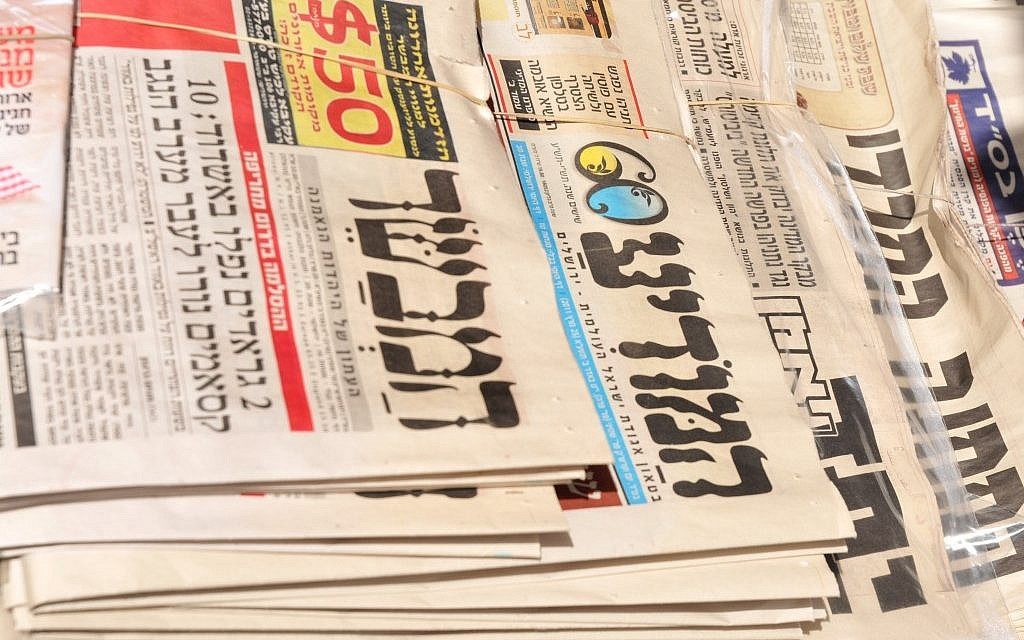There has been a dramatic drop in the exposure to the Chareidi printed media, according to a TGI survey of the Chareidi media published Thursday morning 7 Nissan. The survey also shows that the Kol Chai radio station continues to maintain its status as the leading radio station in the chareidi sector, compared to Kol Berama radio station.
The survey shows the Online media – where Kikar Shabbos leads safely in first place – is constantly strengthening, and the printed chareidi press is unable to expand and in fact, is on the decline.
Sources in the communications market explain that the current survey also shows that the Online chareidi media, which has gained a significant boost in recent years, is weighing down the other channels.
The present survey presents the exposure data for January-December 2017, compared to the previous survey that presented the exposure data for July 2016 through June 2017. (The survey a year ago presented the exposure data for January-December 2016).
Radio stations
Kol Chai drops from 26.9 percent in the previous survey (30.2 percent in a survey a year ago) to 24.1 percent in the current survey, but still maintains its position in the chareidi sector.
Kol Brahma increases slightly from 20.5 percent in the previous poll (20.1 percent in a survey a year ago) to 20.9 percent in the current survey, but remains in second place.
Daily Newspapers
Hamodia maintains the top spot in the daily newspaper sector with 16.6 percent exposure, but records a decline from 18.1 percent in the previous poll (17.0 percent in the survey a year ago).
Yated Ne’eman was second with 16.2 percent exposure, down from 17.1 percent in the previous survey (19.8 percent in a survey a year ago).
“HaMevaser” was in third place – the only one to be strengthened – with 13.5 percent exposure, compared with 11.0 percent in the previous survey (11.1 percent in the survey a year ago).
The Jerusalem Post newspaper reported a decrease of 11.2 percent in the survey, compared with 13.7 percent in the previous survey (10.4 percent in the survey a year ago).
Weekend Newspapers/Magazines
Mishpacha magazine maintains the top spot in the weekend papers with 21.0 percent of exposure, compared to 21.3 percent in the previous poll (21.1 percent in the survey a year ago).
Hamodia newspaper, with 16.5 percent exposure compared to 16.8 percent in the previous survey (18.3 percent a year ago).
Yated Ne’eman newspaper with 14.3 percent of exposure compared with 16.0 percent in the previous survey (17.6 percent in the survey a year ago).
BaKehilla newspaper is growing – with 11.1 percent of exposure compared to 8.9 percent in the previous survey (8.0 percent in the survey a year ago).
HaMevaser” also maintains 8.7 percent of the exposure, compared with 6.6 percent in the previous survey (7.7 percent in the survey a year ago).
Sha’ah Tova newspaper with 1.8 percent of exposure compared with 2.5 percent in the previous survey (1.8 percent in the survey a year ago).
Yom L’Yom newspaper with the new ownership with 2.9 percent of exposure compared with 3.3 percent in the previous survey (4.5% in the survey a year ago).
HaDerech newspaper of the Shas movement was not surveyed in the current survey.
Daily Freebies
Yated Neeman, which is distributed free of charge on Tuesdays, decreased to 41.2 percent, compared with 49.9 percent in the previous survey (50.1 percent in the survey a year ago).
The Friday newspaper HaPeles also drops to 10.7 percent, compared with 13.6 percent in the previous poll (11.8 percent in a survey a year ago).
Weekend Freebies
Kav Itona’ut network with 25.8% of the exposure compared with 26.1% in the previous survey (24.4% in the survey a year ago).
Merkaz Inyanim was 19.1 percent, compared with 20.1 percent in the previous survey (25.3 percent in the survey a year ago).
Magazines
Katifa magazine, with 12.1 percent exposure, compared with 13.2 percent in the previous survey (12.8 percent in the survey a year ago).
Zman magazine published once a month with 19.6 percent of exposure, compared with 21.3 percent in the previous survey (19.0 percent in the survey a year ago).
Te’imot magazine is also published once a month with 10.1 percent exposure compared to 11.2 percent in the previous survey (10.3 percent in the survey a year ago).
The TGI marketing database is conducted by Kantar Media Research TJ Ltd. and under the professional supervision and supervision of the Research Committee of the Association of Advertising Companies. The TGI Database is an initiative of the Association of Advertising Companies, together with the advertising agencies of the sector, to promote the marketing and advertising sector in order to provide professional and advanced tools for this segment.
The database is based on a special section of the general TGI general survey, with the addition of relevant adjustments and information for the purpose of characterizing and analyzing the profile and behavior of the sector. The data presented in the table are based on a statistical sample. Thus, the table should be treated in its entirety, including the columns that show the range of the statistical deviation [confidence interval].
(YWN Israel Desk – Jerusalem)






